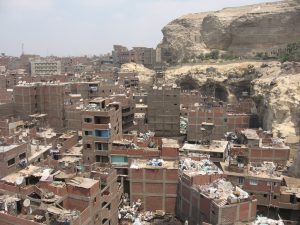 Plastic is pervasive and so are the carcinogenic chemicals that leach from them.
Plastic is pervasive and so are the carcinogenic chemicals that leach from them.
The rapid growth and urbanization of the United Arab Emirates is associated with increased uses of plastic in every aspect of modern life. In 2008, the World Health Organization voiced concerns that rapid urbanization may be negatively impacting people’s lives. Rapid growth is causing air quality to decline in large cities, due in part to industrial emissions and increased a number of vehicles.
This is evident in the increased incidence of respiratory diseases in the last 10 years. But another urgent yet unstated concern is the health impact of chemicals leaching out of the mountains of imported plastic items: plastic toys, canned food, consumer goods and so much more.
Plastic is everywhere!
Since the turn of the 20th century, plastic has entered almost every aspect of our lives: medicine, transportation, construction and consumer products. There seems to be no end to cheap, lightweight, colorful plastic. In the past 10 years alone, we have consumed more plastic than in all decades of use before.

Plastic Soup is a website that draws an atlas of plastics and where it is accumulating around the world.
And while plastic offers great many price and feature advantages, a growing body of scientific evidence suggests some serious connections to human health. In the UAE, as in many other countries, breast cancer is the most frequent cause of cancer-related death. It makes sense to begin to explore possible environmental causes for this devastating disease.
What exactly is the problem? All plastic products start their life as “nurdles”, small pieces of resin product. In order to make a plastic bottle, a shower curtain, a toy or any other product, manufacturers add chemicals, which give the final products color, malleability, sturdiness, inflammability or other qualities. In other words, these chemicals make the final plastic products what they are.
Human carcinogens
This is where the problem emerges: most of these additive chemicals are well known and documented human carcinogens or synthetic hormones, acting as endocrine disruptors. They include PVC, or polyvinyl chloride, which leaches phthalates; polycarbonate, which leaches Bisphenol-A; polystyrene, which leaches styrene, a well-known carcinogen.
These chemicals leach out during the prolonged life of plastic products, especially in high temperatures, or during stress such as freezing and defrosting. A just released study by twelve leading world scientists confirms the danger of endocrine disruptors and hormones at low doses.
What do we know about these chemicals? Where do they come from?
- Polyvinyl Chloride (PVC) – Found in #3 plastic. Also in cling wrap, some plastic squeeze bottles, vinyl shower curtains, wall and floor coverings PVC has been linked to increased mortality from breast cancer and has been designated as a known human carcinogen by the International Agency for Research on Cancer (IARC).
- Bisphenol A (BPA) – Found in #7 plastic and also in thousands of consumer products, including lining of baby formula and soup cans, dental fillings, food packaging, coating of grocery receipts, etc. BPA is an unstable polymer and tends to leach out of plastic. It is also lipophilic, which means it tends to seek fatty substances to attach to. The leaching process accelerates when BPA is heated. BPA has been linked to prostate cancer, lower sperm count, and reproductive abnormalities. New studies are linking BPA to obesity and diabetes, which is on the rise in the UAE as well as the rest of the world.
- Phthalates – Found in #3 plastic, and also in children’s toys, cosmetics, pharmaceuticals, baby care products, building materials, modeling clay, automobiles, cleaning materials and insecticides. Phthalates are added to plastic products to make them soft and malleable. Phthalates are a well-known endocrine disruptor and have been shown to disrupt the development and functioning of male and female reproductive systems by interfering with the production of testosterone and an estrogen known as estradiol.
- Dioxin – Found in #3 plastic. Like PVC, dioxins have been designated as a known human carcinogen by the IARC. It is also a known endocrine disruptor.
- Styrene – Found in #6 plastic and Styrofoam items such as Styrofoam food trays, egg cartons, disposable cups and bowls, carryout containers and opaque plastic cutlery It has been designated as a known human carcinogen by the IARC,
While attention is given to Breast Cancer Awareness Week and other vehicles to share information about this disease, it is really important to begin raising awareness on (1) environmental causes for cancer, and (2) ways to prevent it. By reducing our use of disposable plastic and cutting down on our reliance on this complex material, we can make healthier choices and educate others about the dangerous chemicals that leach out of our everyday products.
This post was contributed to Green Prophet by Daniella Dimitrova Russo, Co-founder and Executive Director, Plastic Pollution Coalition.
More Reasons to Ban Plastic From Your Life:
OP ED: Bioplastics Will Not Solve the Plastic Pollution Problem
Inspired by Oman Caves, Take Green Prophet’s Plastic Bag Challenge
Half of UAE’s Falaj Mualla Camels Choked on Plastic




Excellent resource tool. I’ve shared this in many circles!